#Mogollon culture
Explore tagged Tumblr posts
Text
youtube
Mimbres story bowls | The Mimbres were the only ancient culture of the Southwestern US to paint people or animals engaged in narrative scenes.
#New Mexico#NewMexico#vacation#roadtrip#travel#daytrip#NativeAmerican#culture#history#heritage#Mogollon#Youtube
5 notes
·
View notes
Text

Fishy bowl, Mogollon - Mimbres Culture, New Mexico, 1000 - 1150 AD
from The Dallas Museum of Art
232 notes
·
View notes
Photo
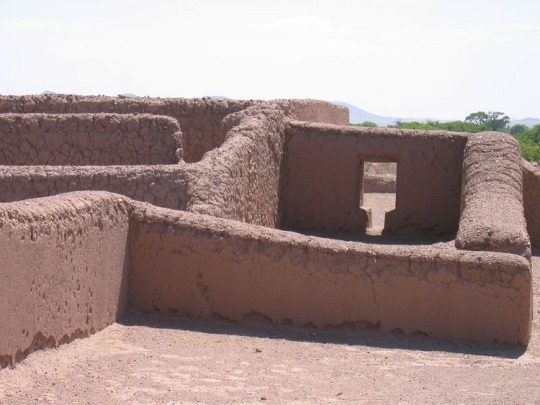
Casas Grandes
Casas Grandes or Paquimé was a major pre-Columbian city that flourished due to its extensive trading networks between c. 1150/1200-1450 CE in the northwest of present-day Chihuahua, Mexico. Casas Grandes is one of the largest and most important archaeological sites in the Oasisamerica region, and the city played a key role in the transmission of knowledge and goods between the cultures of the Pre-Columbian desert southwest and those of Mesoamerica. The construction of Casas Grandes is widely attributed to people who demonstrated the marked characteristics of the Mogollon culture, which existed from c. 200-1450 CE in what is now southern New Mexico and Arizona as well as northern Mexico, but a lively scholarly debate continues as to the exact ethnicities and origins of the peoples who lived in and founded Casas Grandes. Although only 20% of the site has been excavated and surveyed, UNESCO designated Casas Grandes as a UNESCO World Heritage Site in 1998 CE.
Geography & Origins
Situated at the foothills of the Sierra Madre Occidental Mountains and the headstream of the Casas Grandes River (Spanish: Río San Miguel), Casas Grandes or Paquimé is located in what is now the Mexican state of Chihuahua. Blessed in terms of hydrology, Casas Grandes is positioned between many rivers: The Río Bavispe and Río Yaui lie to the west of the Sierra Madre, and the Río Bravos and Río Carmen lie to the east. The city is 56 km (35 miles) south of the city of Janos and 240 km (150 miles) northwest of the city of Chihuahua. Casas Grandes' archaeological zone covers 146 hectares (361 acres), and the city covered over 750,000 m2 (185 acres) at its height. (This is 27 times larger than Chaco Canyon's Pueblo Bonito.) Casas Grandes' periphery included an estimated 10,000 additional inhabitants. Around 350 settlements of varying size existed in close proximity to Casas Grandes, but scholars and archaeologists believe that Casas Grandes' zone of political influence only extended some 30 kilometers (19 miles) from the city's center.
The region had been inhabited by indigenous peoples for thousands of years before the community at Casas Grandes began to coalesce into a sizable, organized community in the latter half of the 12th century CE. The early inhabitants were sedentary agriculturalists who built pithouses around open plazas, hunting wild game for food. Maize was the staple crop, but agave, mesquite beans, piñon, squash, and walnuts were also cultivated.
Many scholars and archaeologists characterize Casas Grandes as the largest and most complex prehistoric site in the desert southwest with high degree of sociopolitical complexity. However, the exact genesis of Casas Grandes around c. 1200 CE remains a matter of much speculation and fierce debate. Casas Grandes emerges as a dynamic polity and cultural center in a period immediately following a massive decline and dispersion in the populations of the Anasazi, Mogollon, and Hohokam between 1150-1300 CE. While some scholars explain Casas Grandes' rapid rise to prominence via a series of migrations southwards by inhabitants belonging to those cultures, others see a more localized origin for Casas Grandes' spectacular rise.
Continue reading...
24 notes
·
View notes
Text
A crash course in some vocabulary
Archaeology, like all sciences, has a lot of specialized jargon we use to talk about pottery. To make sure everyone’s on the same page, here’s a list of some common terms I’ll be using, what they mean, and how to pronounce them.
~ 🏺🏺🏺 ~
Ware: A broader term for a technological/cultural tradition in pottery. Typically, construction method, color, clay type, temper type, and paint type are what defines a “ware.” So Chuska Gray Ware is unslipped, usually unpainted gray clay with crushed black basalt temper. Roosevelt Red Ware is red-slipped clay with sand temper and carbon-based paint. Hohokam Buff Ware is unslipped or cream-slipped buff-colored clay with coarse sand temper, created using a paddle-and-anvil forming method and painted with red paint.
Type: Within a ware, a type is a more narrowly specific decorative style. Roosevelt Red Ware has multiple types within it, such as Salado Red (unpainted red-slipped), Pinto Black-on-red (black paint on the red in a specific radially symmetric interlocked hatched-and-bold pattern), Pinto Polychrome (same decorative style but on a white-slipped interior field), Gila Polychrome (red exterior, white-slipped interior, a usually-broken black band around the rim, black painted designs in a two- or -four-fold symmetry), Tonto Polychrome (bolder and less symmetric black-and-white designs on a red field), Cliff Polychrome, Dinwiddie Polychrome, Nine Mile Polychrome… different stylistic variations on the Roosevelt Red Ware technological/visual core. You can read more about categorizations here.
A note on naming conventions: Pottery in this archaeological tradition tends to have a two-part name: a location where it was first defined and described, and a colorway. Wares tend to be “[Broad location or broad cultural group] [Color] Ware”; types tend to be “[Specific site] [paint color]-on-[clay color].” So within Tusayan White Ware is Flagstaff Black-on-white.
———
Gila: A river in southern Arizona and a bit of New Mexico, and a lizard and a polychrome type named after it. Pronounced hee-la.
Hohokam: An archaeological term for a Native American cultural group that lived in southern Arizona and northern Sonora, defined by traits like red-on-buff pottery, massive canal systems for field irrigation, and platform mounds. It comes from the O'odham-language word huhugham, “ancestors.” They are the ancestors of the modern Tohono O’odham and Akimel O’odham people (it’s a little bit more complicated than that but that’s basically the case.)
Mogollon: An archaeological term for a Native American cultural group from central New Mexico, eastern Arizona, and northern Chihuahua. Most iconic trait is the elaborate range of corrugated and smudged pottery. Named after the Mogollon Rim, the geological formation that marks the edge of the Colorado Plateau and a drastic change in geology and climate in the northern Southwest and the southern Southwest. Along with the Ancestral Pueblo, the Mogollon culture are ancestors of modern southern Rio Grande and Zuni pueblos. Pronounced moh-guh-yon.
Olla: A water jar with a wide body and narrow neck. Pronounced oy-ya.
Polychrome: Pottery that is three or more colors (poly+chrome), most often meaning red, white, and black.
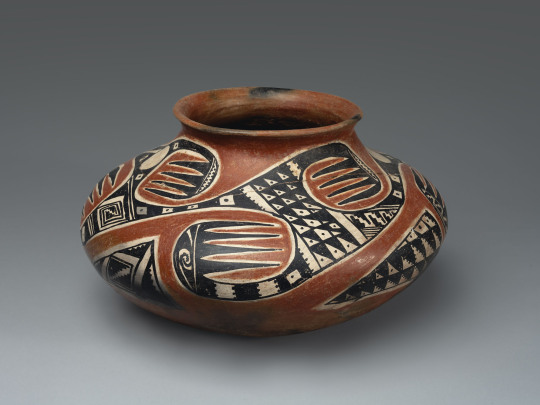
A Tonto Polychrome olla. Southeastern Arizona, 1350-1450.
Pueblo: A collective term for Native people of the Southwest US (particularly in the Rio Grande river watershed, but also Hopi and Zuni) who share cultural traits and history—most immediately notably, a tradition of living in square adobe houses in large villages, which are also each called pueblos. Ancestral Pueblo is the term for the archaeologically-defined cultural group that share these similar traits and are, generally, from the northern half of New Mexico and Arizona, and a southern strip of Colorado and Utah. The Ancestral Puebloans were formerly called “Anasazi” but that has fallen out of favor due to pushback from modern Pueblos. Also, each modern Pueblo prefers to be called a Pueblo rather than a tribe in most cases—so you say the Pueblo of Acoma, the Pueblo of Ohkay Owingeh, Picuris Pueblo, Taos Pueblo, the Pueblo of Zuni, etc.
Temper: Non-clay bits that are added to natural clays to make them easier to work with. When you buy clay from a store now, it’s already mixed and processed and ready to use. When you find clay out in nature, it’s almost never so easy. Typically, you have to mine/harvest clay from riverbanks or cliffsides, and it’s hard and dried; then you have to grind the hard clay up into fine particles, and mix them with water. But natural clays are often puddly and don’t always hold together well, so you add temper, something hard and grainy to make your wet clay stick together more easily and make it good to work with! Temper can be sand, ground-up rock, ground-up shell, or even ground-up bits of other broken pottery. What different people used as temper is one defining feature of a pottery ware and pottery tradition.
Sherd: A broken bit of pottery. NOT shard. When it’s pottery, it’s “sherd.”
Slip: Very runny wet clay. It’s used to help attach clay pieces together, but more pertinently here, plain-colored pots are covered with an even layer of bolder-colored clay slip to get the desired color pot.
Smudging: A decorative style that potters made during the firing stage. They would have open pit-fires for firing their pottery, and cover the desired part of the pot with a layer of charcoal or ash. This creates a carbonized, reducing environment—that is, a lot of carbon, and little oxygen. This creates a smooth, inky black finish on the completed pot.
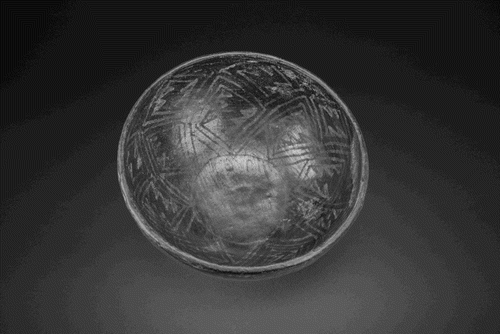
A Starkweather Smudged bowl. Mogollon, western New Mexico, AD 900-1200.
Vessel: Another word for pot, basically. Means a ceramic container of some sort. Bowls, jars, ladles, pitchers, mugs, etc are all vessels; effigies and statuettes are not.
56 notes
·
View notes
Text
The Apache are a group of culturally related Native American tribes in the Southwestern United States, which include the Chiricahua, Jicarilla, Lipan, Mescalero, Mimbreño, Ndendahe (Bedonkohe or Mogollon and Nednhi or Carrizaleño and Janero), Salinero, Plains (Kataka or Semat or "Kiowa-Apache") and Western Apache (Aravaipa, Pinaleño, Coyotero, Tonto). Distant cousins of the Apache are the Navajo, with whom they share the Southern Athabaskan languages. There are Apache communities in Oklahoma and Texas, and reservations in Arizona and New Mexico. Apache people have moved throughout the United States and elsewhere, including urban centers. The Apache Nations are politically autonomous, speak several different languages, and have distinct cultures. Historically, the Apache homelands have consisted of high mountains, sheltered and watered valleys, deep canyons, deserts, and the southern Great Plains, including areas in what is now Eastern Arizona, Northern Mexico (Sonora and Chihuahua) and New Mexico, West Texas, and Southern Colorado. These areas are collectively known as Apacheria. The Apache tribes fought the invading Spanish and Mexican peoples for centuries. The first Apache raids on Sonora appear to have taken place during the late 17th century. In 19th-century confrontations during the American-Indian wars, the U.S. Army found the Apache to be fierce warriors and skillful strategists.

91 notes
·
View notes
Text
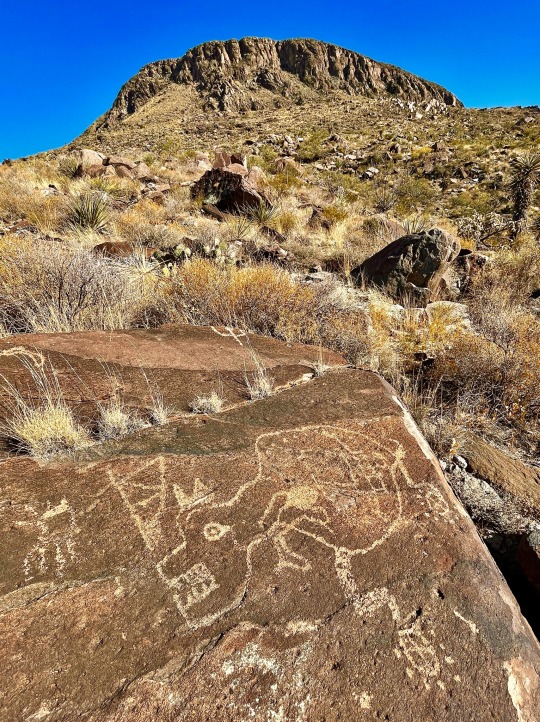
AM Site, NM (iPhone photo from 2021)
Let’s get this out of the way first: The last time I posted this, a bunch of people called it modern, i.e., fake (it is not). It seems there are many who can’t wrap their head around the idea that not all rock imagery is representational to real-world experience. The Ancient Ones had as much (if not more) creativity and imagination as modern humans. They had intricate belief systems, unique ways of looking at the natural and spiritual world, and most of all, they didn’t always draw what they saw. When looking at rock imagery, we must try to separate our own way of thinking from that of a person from over 1,000 years ago. They just saw things differently. This could be a bear. This could be a creature from the artist’s cultural cosmology. It could be something made up on the spot. We will never know for sure. But I can assure you, this image is from the Mogollon culture, dating somewhere around 200-1450 CE.
The glyph itself is one of my absolute favorites of all the rock imagery I’ve seen over the years. The imposing, toothy head is the first thing that stands out, but then you start to notice the more subtle details of this design. The two “legs” have quartered circles for feet surrounded by dots. These “legs” look lighter, possibly added at a later date. The “crown” could be ears or horns. There’s what looks like a small tail and more dots running along the back. I can’t even begin to theorize what’s happening with the small front “arms” and the other design inside the body. I love the shape of the eye.
Interpretations are fun to make, as long as we understand that it’s all a guess, and the only one who truly knows what this image means is the person who created it. They would probably say it’s a T-Rex. 😂
106 notes
·
View notes
Text
Bigfoot in Deserts
Bigfoot, typically associated with the dense forests of the Pacific Northwest, is a creature of legend that has intrigued people for generations. However, reports and sightings of Bigfoot are not exclusive to forested regions; there are also intriguing accounts from desert environments. These sightings challenge our typical understanding of Bigfoot's habitat and provoke questions about the adaptability and nature of this elusive creature.
In the arid landscapes of the American Southwest, there have been numerous reports of Bigfoot-like creatures, often referred to locally as the "Mogollon Monster" in Arizona or "Yucca Man" in California. These desert Bigfoot sightings date back decades and often share common characteristics with forest sightings, including large, hairy, bipedal figures, but with adaptations that suggest a unique way of living in such harsh environments. Witnesses describe these desert-dwelling Bigfoot as being covered in lighter-colored fur, possibly as a means of blending into the sandy and rocky terrain.

One notable area of activity is the Mogollon Rim in Arizona, a region that, while primarily forested, also includes significant desert expanses. Stories from the Mogollon Rim describe encounters with a creature that fits the Bigfoot description—tall, muscular, and covered in hair. These reports often come from campers, hikers, and residents who have had unsettling experiences, such as hearing guttural screams and finding large, human-like footprints in the desert sands. The existence of water sources such as rivers and creeks in this area could provide the necessary sustenance for a large, elusive creature.
In California's deserts, particularly around the Joshua Tree National Park, there are tales of the "Yucca Man," a Bigfoot-like entity reported by locals and military personnel alike. The sparse vegetation and vast open spaces of the desert seem unlikely habitats for such a large primate, yet sightings persist. These desert Bigfoot are often described as nocturnal, possibly to avoid the extreme heat of the day, and are said to exhibit behaviors such as raiding campsites for food and water.
These desert sightings raise interesting questions about Bigfoot's adaptability. A creature surviving in such a harsh environment would need to possess significant resilience and resourcefulness. It suggests that Bigfoot might be more versatile in its habitat preferences than previously thought, capable of finding food and water in environments where such resources are scarce. This adaptability could explain how a species could remain so elusive and yet be reported in such diverse habitats.

Moreover, the cultural aspect of Bigfoot in desert environments cannot be overlooked. Indigenous peoples of these regions, such as the Hopi and Navajo, have their own legends and stories of large, hairy creatures that roam the deserts. These tales often blend myth with potential historical encounters, adding a rich layer of context to modern sightings. Such stories have been passed down through generations and lend credence to the idea that Bigfoot, or creatures like it, have been part of the landscape for centuries.
In conclusion, while Bigfoot is typically associated with forested regions, reports from desert environments add a fascinating dimension to the legend. These sightings suggest that Bigfoot, if it exists, is a highly adaptable creature capable of surviving in a variety of harsh conditions. Whether through the Mogollon Monster of Arizona or the Yucca Man of California, the presence of Bigfoot in desert locales continues to captivate and perplex both believers and skeptics alike, enriching the tapestry of this enduring mystery.
5 notes
·
View notes
Photo

"The Mogollon-Mimbres Culture of the Southwest," exhibit, Palace of the Governors, Santa Fe, New Mexico, ca. 1950s-1960s?
Negative number: 001473
46 notes
·
View notes
Text

Anasazi Indians: The Ancestral Puebloans were an ancient Native American culture centered in present-day Four corners area of the United States, comprising Southern Utah, Northeastern Arizona, Northern New Mexico, and South Western Colorado.
They lived in a range of structures, including pit houses, pueblos, and cliff dwellings designed so that they could lift entry ladders during enemy attacks.
The people and their archaeological culture were historically called Anasazi from Navajo term Anaasazi, meaning "Ancient Ones"
Between 300B.C. and 100A.D., there were four distinct Indian cultures settled in SouthWest, Anasazi, Mogollon, Hohokam, and Sinagua. The fifth culture, the Fremont Indians settled primarily in Utah in 400A.D.
2 notes
·
View notes
Text
Ep 269: The Hitchhiker of Mogollon Rim
"The trickster is found worldwide. Superficially, his tales seem little more than entertaining stories for children, but they encode important truths. The trickster is central to many religious beliefs, and some of the tales are sacred. In fact, a number of cultures permit only a few persons to tell the stories and restrict when they can be told because they have a power of their own." -- "The Trickster and the Paranormal," by George P. Hansen
Description:
The Mogollon Rim in northcentral Arizona is a geological landform that spans around 200 miles east to west, demarking the southern boundary of the Colorado Plateau in the state. This topographical feature is classified as an escarpment where wide and steeply sloping cliffs and rock masses delineate the high pine-covered plateau on the northern side, which receives cold winter temperatures and light snow from the desert-like conditions below to the south. This transitional nature provides a habitat for significantly varying types of plants and animals. Perhaps because of Mogollon Rim’s liminal nature, this variance is claimed by many to also extend to creatures and phenomena that dwell beyond our understanding. Accounts and legends of UFOs, supernatural occurrences, and even its own brand of a hominin-like beast known as the “Mogollon Monster” are familiar to the territory. The supernatural element became all too real for our guest, Jay, who endured a terrifying encounter while working as a wildlife biologist for the Arizona Game and Fish Department. While studying black bears in the rugged canyons and terrain of the Rim, Jay encountered an impossible stranger in a pretty unlikely place, one that insisted on getting a ride. But who or what was this thing, and what was their intention? An ancient spirit known to the Native American cultures of the region or a physical being with mystical powers masquerading as a weird human? While it is never advisable to pick up strangers, it seems that one may be compelled to give a ride to a hitchhiker on Mogollon Rim, maybe as just a playful reminder that humans are not the apex of the paranormal food chain.
Reference Links:
CLICK HERE to listen to “Astonishing Al’s Mix Tape” on Spotify
CLICK HERE to listen to “Astonishing Legends Creepit” – a curated collection of our creepiest episodes on Spotify!
Mogollon Rim on Wikipedia
Mogollon culture on Wikipedia
Navajo
Escarpment
Madrean Sky Islands
Sky island
“Mogollon Monster 100” trail race
Mogollon Monster
The Mogollon Monster from Weird U.S.
“Bigfoot sightings abound in early Rim Country history” from the Payson Roundup, Tuesday, March 1, 2016
“Arizonan Legends” from the Horizon Sun, April 1, 2017
“Rim Country Places” from the Rim Review, January 22, 2014
“Ask Clay: Gather round for tales of the Mogollon Monster” from azcentral.com
“Searching for the Mogollon Monster” from Williams - Grand Canyon News
“Story, video: Apaches go public with Bigfoot sightings: 'It cannot be ignored any longer'“ from Tucson.com
“40 years later: Most documented UFO sighting, abduction still draw interest” from the White Mountain Independent
The Mogollon Monster YouTube channel
“The Legend Of The Mogollon Monster In Arizona May Send Chills Down Your Spine” from Only in Your State
Arizona Game & Fish Department
Location:
Mogollon Rim, Arizona
Suggested Listening:
Badlands
Badlands is an anthology series that blends history and true crime to tell the transgressive stories of some of the biggest names in Hollywood. This is not the Hollywood history you’ve heard before. These are uncensored, immersive, edge-of-your-seat storytelling. Host Jake Brennan, creator and host of the award-winning music and true crime podcast DISGRACELAND, explores the most insane stories surrounding the world’s most interesting Hollywood icons. Badlands has covered many actors, directors, and more, including the mysterious deaths of Marilyn Monroe and Natalie Wood... Tim Allen’s former career as a low-level drug dealer... the curse of the movie Poltergeist... how porn star John Holmes got caught up in the infamous Wonderland murders... and more episodes on Winona Ryder, Johnny Depp, River Phoenix, Gianni Versace, Robin Williams, Heath Ledger, Sharon Tate, Robert Downey Jr., and so many more. New episodes of Badlands are released every Wednesday, with bonus episodes released every Friday. Subscribe to Badlands on Apple Podcasts, Spotify, the iHeartRadio app, AmazonMusic, or wherever you get your podcasts.
Opening the Doors
Hear Forrest as a guest on our good friend Bradley Netherton’s podcast, Opening the Doors, all about the legendary band with Jim Morrison! This episode covers all the mentions of The Doors on The Simpsons animated series.
KLU Podcast – Keep Looking up
CLICK HERE for Persephone Holloway’s podcast, KLU “Keep Looking Up” on Podbean
Persephone May Holloway’s music on Spotify
Southern gothic podcast
Listen to our good friend Brandon Schexnayder’s Southern Gothic podcast, featuring Forrest narrating Edgar Allen Poe’s poem, Annabelle Lee
Find us on YouTube!
Click this text to find all Astonishing Legends episodes and more on our Youtube Channel https://www.youtube.com/c/Astonishinglegends
Join us on Patreon!
Click HERE or go to patreon.com/astonishinglegends to become one of our Patreon members and receive exclusive offerings, like our bonus Astonishing Junk Drawer episodes (posted every weekend the main show is dark) commercial-free episodes, and more!
SPECIAL OFFERS FROM OUR SPECIAL SPONSORS:
FIND OTHER GREAT DEALS FROM OUR SHOW’S SPONSORS BY CLICKING HERE!
CREDITS:
Episode 269: The Hitchhiker of Mogollon Rim. Produced by Scott Philbrook & Forrest Burgess; Audio Editing by Sarah Vorhees Wendel of VW Sound. Music and Sound Design by Allen Carrescia. Tess Pfeifle, Producer and Lead Researcher. Ed Voccola, Technical Producer. Research Support from The Astonishing Research Corps, or "A.R.C." for short. Copyright 2023 Astonishing Legends Productions, LLC. All Rights Reserved.
#2023#267#nightmare#Legend#Tim Curry#Palm Reading#Palmistry#demon#devil#lucid dream#Baltimore#Ring Around the Rosie#Persephone#vision#Philadelphia#Washington Crossing#New Jersey#Stone Tape Theory#Revolutionary War#Civil War#UFO#UAP#abduction#Missing Time#alien#Nordic#Fae#Faeries#Mount de Sales Academy#268
3 notes
·
View notes
Note
Joanna Riggs and Ethel for the ask game!
OMG! Yes! These questions are so much fun!
Joanna Riggs: What’s your favorite exhibit at the museum?
I’m a huge museum nerd and I work at a museum! I love history museums. My favorite exhibit was a maritime history exhibit at the Smithsonian American History Museum! It was absolutely beautiful and gave me serious Danger on Deception Island vibes.
Ethel Bossiny: What period in or piece of history fascinates you the most?
I love pre Colombian Southwest History. My favorite group to study is the Hohokam Culture and Mogollon Culture in Arizona and New Mexico. I also love studying the Neolithic period.
3 notes
·
View notes
Text
youtube
Gila Cliff Dwellings • Mogollon Culture • New Mexico
#New Mexico#Native American#Silver City#off the beaten path#weekend getaway#day trip#travel#Mogollon#Mimbres#heritage#history#Youtube
3 notes
·
View notes
Text
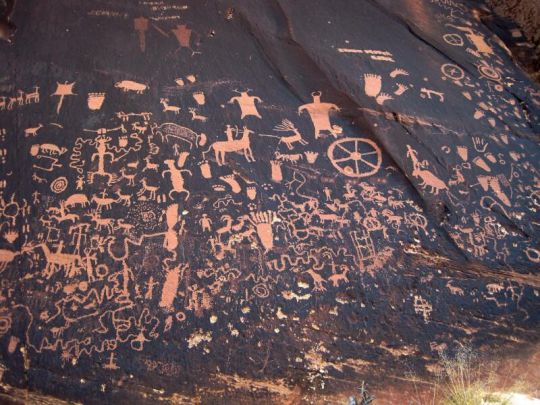
Newspaper Rock, Utah.
Engravings on sandstone made over a long period, starting 2000 years ago. Includes markings made by the Ancestral Pueblo, as well as the later Fremont and Navajo. Exact purpose unknown.
Add more info.
Check this info:
Ancestral Pueblo refers to both the ancient cultural tradition and the peoples once found in the Four Corners area of the American Southwest. It is one of three major cultural traditions defined by archaeologists in the four southwestern states (Arizona, Colorado, New Mexico, and Utah). The other two traditions are the Hohokam and Mogollon, neither of which extends into Colorado.
#Native American#art#Newspaper Rock#Utah#Four Corners#Ancestral Pueblo tribe#Fremont tribe#Navajo tribe
3 notes
·
View notes
Text
May 2024 Diverse Reads

May 2024 Diverse Reads:
•”Lies and Weddings” by Kevin Kwan, May 21, Doubleday Books, Romance/Romantic Comedy/Women/Cultural Heritage/Asian & Asian American
•”América del Norte” by Nicolás Medina Mora, May 07, Soho Press, Literary/Political/Cultural Heritage/Hispanic & Latino
•”Ella” by Diane Richards, May 07, Amistad Press, Biographical, Historical/Women/Cultural Heritage/African American & Black
•”Daughters of Shandong” by Eve J. Chung, May 07, Berkley Books, Literary/Historical/Political/Women/World Literature/China
•”A Crane Among Wolves” by June Hur, May 14, Feiwel & Friends/Historical/Mysteries & Detective Stories/Romance/Royalty/Political/World Literature/Korea
•”The Ministry of Time” by Kaliane Bradley, May 07, Avid Reader Press / Simon & Schuster, Science Fiction/Spy Thriller/Time Travel/Romance/Workplace
•”The Return of Ellie Black” by Emiko Jean, May 07, Simon & Schuster, Thriller/Suspense/Women
•”Exhibit” by R. O. Kwon, May 21, Riverhead Books, Literary/Women/Friendship/Cultural Heritage/Asian American
•”Oye” by Melissa Mogollon, May 14, Hogarth Press, Contemporary/Humorous/Family Life/General/Cultural Heritage/Hispanic & Latino
•”Lavash at First Sight” by Taleen Voskuni, May 07, Berkley Books, Romance/Romantic Comedy/LGBT/Women/Cultural Heritage/Armenian American
•”The Library Thief” by Kuchenga Shenjé, May 07, Hanover Square Press, Literary/Historical/Gothic/Cultural Heritage/African American & Black/World Literature/England/Jamaica
•”Cecilia” by K-Ming Chang, May 21, Coffee House Press, Literary/Magical Realism/Cultural Heritage/Asian American/LGBTQ
•”Goddess of the River” by Vaishnavi Patel, May 21, Redhook, Literary/Historical/Fantasy/Fairy Tale/Folk Tale/Legends & Mythology/Ancient/Magical Realism
•”Cinema Love” by Jiaming Tang, May 07, Dutton, Literary/Cultural Heritage/Asian American/LGBTQ
•”Bad Seed: Stories” by Gabriel Carle, translated by Heather Houde, May 07, Feminist Press, Contemporary/Short Stories/Coming of Age/LGBT/World Literature/Caribbean & West Indies
•”How to Make Your Mother Cry” by Sejal Shah, May 01, West Virginia University Press, Literary/Short Stories/Women/Cultural Heritage/Asian American/Own Voice
•”Magical/Realism: Essays on Music, Memory, Fantasy, and Borders” by Vanessa Angélica Villarreal, May 14, Tiny Reparations Books, Personal Memoir/Essays/Short Essays/Essay Collection/Memoir in Essay/Popular Culture/Ethnic Studies/Hispanic American Studies
•”Accordion Eulogies: A Memoir of Music, Migration, and Mexico” by Noé Álvarez, May 28, Catapult, Personal Memoir/Cultural, Ethnic & Regional/Cultural Heritage/Hispanic & Latino/Folk & Traditional/Ethnic Studies/Hispanic American Studies
•”But What Will People Say?: Navigating Mental Health, Identity, Love, and Family Between Cultures” by Sahaj Kaur Kohli, May 07, Penguin Life, Personal Growth/Psychotherapy/Happiness/Emotions/Cultural, Ethnic & Regional
•”Black Meme: A History of the Images That Make Us” by Legacy Russell, May 07, Verso, Art & Politics/Commentary & Opinion/Ethnic Studies/African American Studies/Communication Studies/Race & Ethnic Relations
#books#bookworm#bibliophile#book lover#bookish#bookaddict#reading#book#booklr#bookaholic#reading list#to read#reader#book release#book recommendations#book reccs#book reading#read diversely#read diverse books#diverse authors#diverse reads#diverse books
0 notes
Text
Preliminaries: War of the Utility Wares!
Most pottery you find in archaeological sites isn't painted. Most pottery is unslipped, undecorated utility ware - with the assumption that "utility" typically here means "cooking over a fire." Sometimes grain storage. Usually cooking, though.
It doesn't mean they can't be beautiful in their own right. And one of my friends is working on a dissertation which among other things argues that "surface treatments" like incising and corrugation should be considered "decoration" too, when usually in archaeology "decorated" means "painted." There were lots and lots and lots of types of utility wares. Some were plain. Some were gorgeous.
So this is a Preliminary Round - four different styles traditionally called utility ware will go up against each other... only two will move on to represent utility wares in the final bracket.
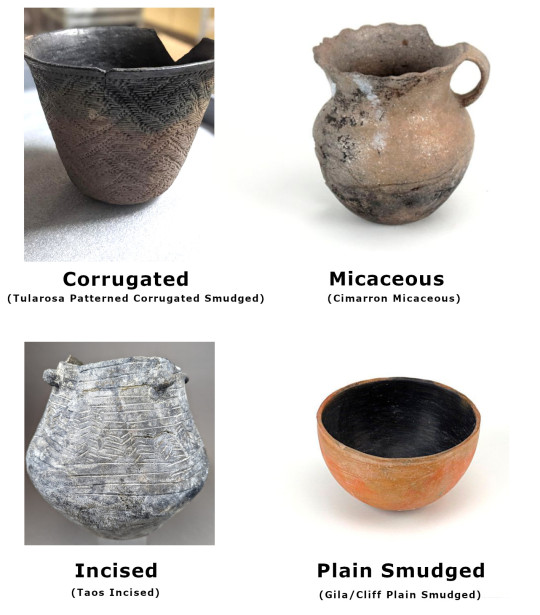
Vote for your favorite: More information about each is under the cut:
Corrugated
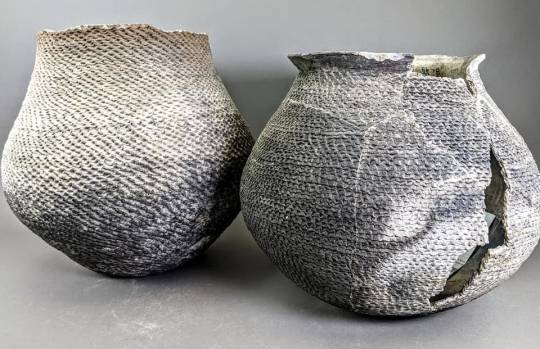
Mesa Verde Corrugated jars. Southern Colorado, AD 1100-1300.
There are SO many different types of corrugated pottery; if I listed them all we'd be here all day. However, they all have commonalities: They were primarily (though not exclusively) made in the Mogollon cultural region, primarily (though not exclusively) plain and unpainted, and primarily (though not exclusively) used for cooking.
In this region, potters don't use pottery wheels. Pots are hand-built, typically from coil-building: using many thin coils to build up the shape of the pot. For most pots, those coils are scraped smooth as they're still wet. But for corrugated pots, those coils are only scraped smooth on the inside. The outside coils are instead pressed using a tool or the potter's thumb to make a patterned, scaled, or woven texture. Corrugation, due to its association with cooking pots, is not typically considered "decoration" by archaeologists, but it creates beautiful and captivating patterns.
Micaceous
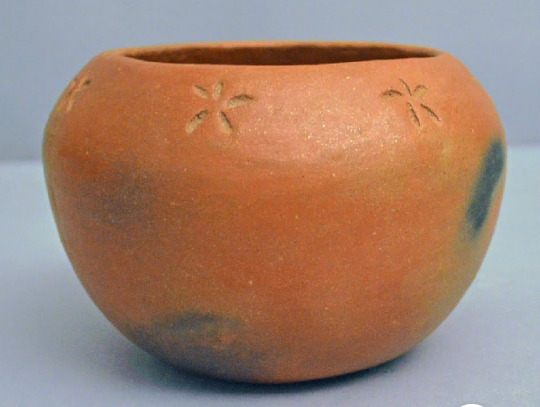
Micaceous Bowl with Etched Flowers. Made by Virginia Romero (Taos Pueblo, 1896-1998).
In northern New Mexico, there are golden-red clays with a lot of sparkly mica in them. The mica self-tempers the clay, and creates a lovely shimmering effect when you see the pots in person. There's evidence of polished micaceous pottery being made as early as the 1300s, but it really took off as a popular type of cooking ware in the 1500s-1600s. In this time, it was made primarily by norther Pueblos like Taos, Picuris, and Nambe, but was enthusiastically adopted by the Jicarilla Apache as well, who have strong social ties to those northern Pueblos. Cimarron Micaceous, the handled jar seen above the cut, is a 1600s Apache micaceous pottery style.
Micaceous pottery is still extremely popular with Native potters today. Some of it is as an art form, with many different experiments in structure and style, but some people still swear by cooking in these micaceous clay pots - beans just taste better when cooked in clay instead of metal!
Incised

Taos Incised jar sherd. Northern New Mexico, AD 1050-1300.
Incised ware is SO underappreciated. However I am also biased because for the past three or four summers I have worked on an archaeology project in the Taos area and we find so much of it.
Incised designs are carved into the wet clay. Usually, these are not painted. Incised pottery is very common on the Great Plains, but less so in the Southwest. The Northern Pueblos like Taos and Picuris, however, has long-standing interactions with Plains groups, trading corn and buffalo hides, holding market days together, Picuris and Taos people fleeing the Spanish invasion to live in Kansas with their Apache allies. This is also visible in the sharing of pottery styles in the northern Pueblos, where incised ware is common. Parallel lines that mimic corrugation, chevrons, and herringbone patterns are common.
Plain Smudged
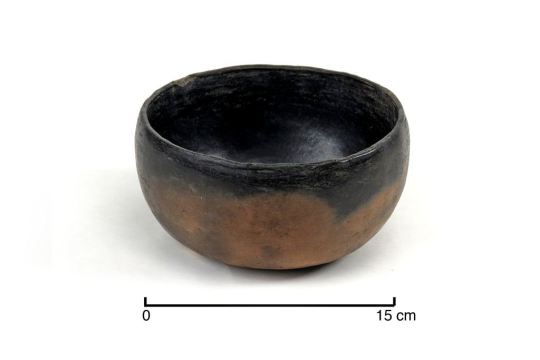
Reserve Plain Smudged, Mogollon Highlands, AD 600-1250.
As I described in my pottery jargon post, "smudging" is a method of getting that shiny black interior during the firing stage. During firing, different levels of oxygen will cause the minerals in the clay to turn different colors. An oxidized environment (high oxygen) turns iron-rich clays red; a recducing atmosphere (restricted oxygen) plus an infusion of carbon turns them black. To smudge a pot, the inside is polished, and then in the firing pit is covered with ash and charcoal. This puts a lot of carbon on the surface, and blocks the oxygen from reaching it. When the pot comes out of the fire, the part that was covered in charcoal will be shiny black. This was another pottery style particularly popular in Mogollon areas.
47 notes
·
View notes
Text
The Apache are a group of culturally related Native American tribes in the Southwestern United States, which include the Chiricahua, Jicarilla, Lipan, Mescalero, Mimbreño, Ndendahe (Bedonkohe or Mogollon and Nednhi or Carrizaleño and Janero), Salinero, Plains (Kataka or Semat or "Kiowa-Apache") and Western Apache (Aravaipa, Pinaleño, Coyotero, Tonto). Distant cousins of the Apache are the Navajo, with whom they share the Southern Athabaskan languages. There are Apache communities in Oklahoma and Texas, and reservations in Arizona and New Mexico.
Native Culture

45 notes
·
View notes